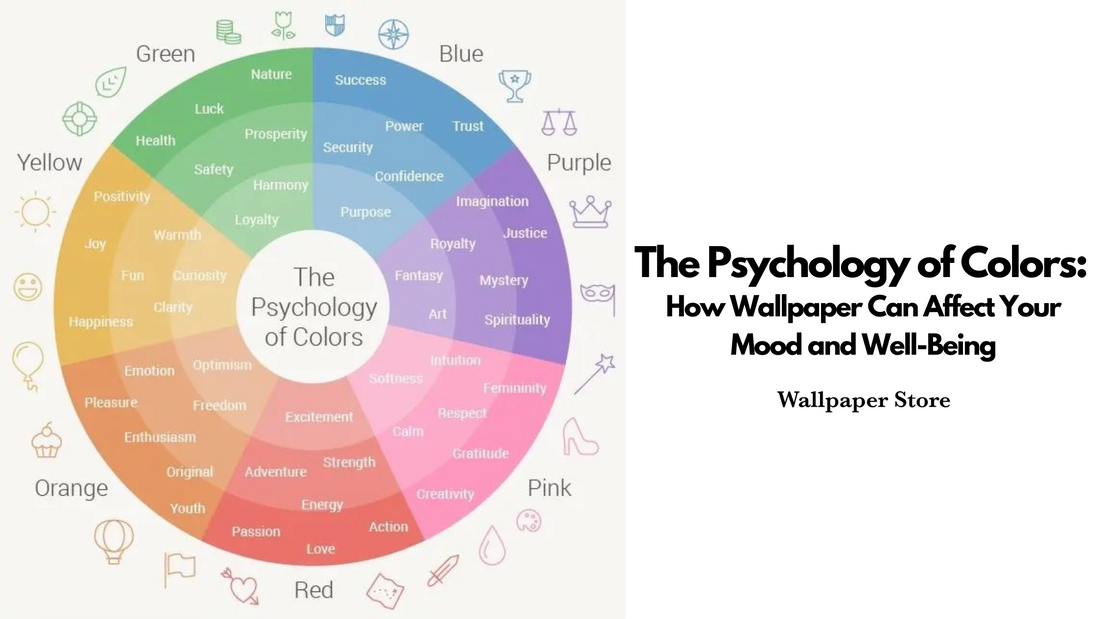I. Introduction
A. Importance of color in interior design
1. Visual appeal and style
Color plays a crucial role in interior design, as it helps create visual appeal and sets the tone for a space. The right choice of colors can make a room feel more inviting, stylish, and harmonious.
2. Emotional and psychological impact
Beyond aesthetics, colors also have a significant emotional and psychological impact on people. Colors can evoke certain feelings, affect mood, and even influence behavior.
B. The psychology of colors
3. How colors can influence mood, thoughts, and behavior
Color psychology is the study of how colors can influence our mood, thoughts, and behavior. Certain colors can create specific emotional responses, such as making people feel relaxed, energized, or focused.
4. The role of personal experiences and cultural factors
Individual experiences and cultural factors can also play a role in how colors affect us. Our personal associations with colors, as well as the meanings and symbolism attached to colors within our culture, can impact our emotional reactions.
C. The relevance of wallpaper in color psychology
5. The ability to transform spaces using color
Wallpaper is an excellent way to incorporate color into a space, allowing for a transformative effect on the room's atmosphere. The wide variety of wallpaper styles available, from traditional to mural and grasscloth wallpapers, offers endless possibilities for personalizing a room with color.
6. The potential benefits of choosing the right wallpaper colors for well-being
Choosing the right wallpaper colors for specific rooms, such as bedrooms, living rooms, dining rooms, offices, kids' bedrooms, and nurseries, can enhance the overall mood and well-being of those using the space.
II. Body
A. The impact of specific colors on mood and well-being
1. Warm colors (red, orange, yellow)
a. Energizing and stimulating effects
Warm colors, such as red, orange, and yellow, evoke feelings of energy, warmth, and excitement. These colors can stimulate both the mind and the senses, making them great choices for spaces where activity and engagement are desired.
b. Considerations for use in specific rooms
When selecting wallpaper for rooms like dining rooms and children's play areas, warm colors can be used to create a lively and inviting atmosphere.
2. Cool colors (blue, green, purple)
a. Calming and soothing effects
Cool colors, such as blue, green, and purple, are known for their calming and soothing effects. They can promote relaxation and help reduce stress, making them ideal for spaces where tranquility and serenity are desired.
b. Appropriate use in different living spaces
Cool colors are excellent choices for bedrooms and living rooms, where they can help create a peaceful and calming environment.
3. Neutral colors (white, gray, black, beige)
a. Versatility and balance
Neutral colors like white, gray, black, and beige offer versatility and balance in interior design. They can serve as a foundation for other colors, allowing for a cohesive and harmonious space.
b. Combining with other colors for desired effects
By pairing neutral colors with other hues, you can create a desired mood or atmosphere. For example, combining neutral wallpaper with pops of vibrant color can add energy and excitement to a room.
c. The influence of color combinations and patterns
The way colors are combined and the patterns used in wallpaper design can also impact the overall mood and well-being in a space. For instance, nature-inspired wallpapers or abstract designs can evoke different emotional responses depending on the color scheme and pattern.
4. Complementary and contrasting colors
a. Creating visual interest
Using complementary and contrasting colors in wallpaper design can create visual interest and add depth to a room. This can help to balance energy and mood, creating a dynamic and engaging atmosphere.
b. Balancing energy and mood in a room
When selecting wallpaper, consider using complementary and contrasting colors to achieve the desired balance of energy and mood in a room.
5. Monochromatic and analogous colors
a. Harmony and cohesion
Monochromatic and analogous color schemes create a sense of harmony and cohesion in a space. This can contribute to a calming and balanced atmosphere, promoting well-being.
b. Impact on room atmosphere and well-being
Choosing wallpaper with a monochromatic or analogous color scheme can help create a unified and harmonious atmosphere that supports well-being.
c. The role of color saturation and intensity
The saturation and intensity of colors used in wallpaper design can also affect mood and well-being. For instance, highly saturated colors can be energizing, while more muted colors can promote relaxation.
6. Vibrant and bold colors
a. Effects on energy levels and emotions
Vibrant and bold colors can have a strong impact on energy levels and emotions. They can invigorate a space and make it feel more lively and dynamic.
b. Strategic use for specific purposes
Using vibrant and bold colors strategically in wallpaper design can be beneficial for certain spaces, such as home offices, where increased energy and creativity are desired.
7. Muted and subdued colors
a. Soothing and comforting effects
Muted and subdued colors can have a soothing and comforting effect on the mood and atmosphere of a space. They can help create a calm and relaxing environment, which can contribute to overall well-being.
b. Creating a calm and relaxing environment
Incorporating muted colors in wallpaper design can be especially beneficial for spaces like bedrooms and nurseries, where a calm and soothing atmosphere is important.
8. Bedrooms
a. Promoting relaxation and rest
Selecting wallpaper colors for bedrooms should focus on promoting relaxation and rest. Cool colors, such as blues and greens, can help create a peaceful atmosphere conducive to sleep and rejuvenation.
b. Choosing colors for a peaceful atmosphere
When choosing wallpaper for a bedroom, consider colors and patterns that evoke feelings of tranquility and serenity to support rest and well-being.
9. Living rooms and common areas
a. Encouraging social interaction and positive energy
In living rooms and common areas, wallpaper colors should encourage social interaction and positive energy. A combination of warm and cool colors can help create a balanced and inviting atmosphere that supports communication and connection.
b. Selecting colors to enhance mood and communication
Choose wallpaper colors and patterns that contribute to a lively and engaging atmosphere in living rooms and common areas to promote well-being and positive interactions.
10. Workspaces and home offices
a. Fostering focus and productivity
In workspaces and home offices, wallpaper colors should foster focus and productivity. Colors like yellow and blue can stimulate creativity and motivation, while neutral colors can provide a sense of balance and stability.
b. Incorporating colors that stimulate creativity and motivation
Select wallpaper that incorporates colors and patterns that support focus, creativity, and motivation to enhance well-being and productivity in workspaces and home offices.
11. Children's rooms and play areas
a. Supporting development and learning
In children's rooms and play areas, wallpaper colors should support development and learning. Warm colors can encourage playfulness and engagement, while cool colors can promote relaxation and focus during quieter activities.
b. Utilizing colors to inspire imagination and playfulness
Choose wallpaper designs that incorporate colors and themes, such as animal wallpapers or children's map wallpapers, that inspire imagination and playfulness in children's spaces.
12. Cultural influences and symbolism
a. The significance of certain colors in different cultures
It is essential to consider the cultural significance and symbolism of colors when selecting wallpaper, as this can impact the emotional response to the space.
b. Adapting to individual preferences and beliefs
Taking into account cultural influences and symbolism can help create a space that resonates with the individual preferences and beliefs of the people using the space, contributing to their overall well-being.
13. Individual experiences and associations
a. Personal memories and emotions tied to specific colors
Individual experiences and associations with colors can also influence how they affect mood and well-being. Personal memories and emotions tied to specific colors can create unique responses in different people.
b. Acknowledging and accommodating unique responses to colors
When selecting wallpaper colors, it is essential to consider individual experiences and associations to create a space that supports the unique emotional needs and well-being of its occupants. This may involve using colors that hold special meaning or evoke positive memories for those who will be using the space.
III. Conclusion
A. Recap of the importance of color psychology in wallpaper selection
The impact of colors on mood and well-being
Throughout this essay, we have explored the importance of color psychology in wallpaper selection and its potential effects on mood and well-being. The strategic use of colors in wallpaper design can create a space that promotes happiness, comfort, and well-being, with each color offering its unique benefits.
The potential benefits of intentional color choices
By understanding the psychological effects of specific colors and making intentional choices in wallpaper selection, we can create living spaces that cater to our individual needs, preferences, and desired emotional states.
B. Emphasizing the role of personal preferences and experiences
Recognizing the subjectivity of color perception
It is crucial to acknowledge the subjectivity of color perception and the role personal preferences and experiences play in how colors affect our mood and well-being. This understanding allows us to create spaces that resonate with the unique emotional needs of their occupants.
Adapting to individual needs and tastes
By adapting to individual needs and tastes, we can design spaces that promote happiness, comfort, and well-being for each person who uses them.
C. Encouragement for readers to explore color psychology in their own homes
Experimenting with different colors and patterns
To create a home that truly supports your well-being, we encourage you to experiment with different colors and patterns in your wallpaper selection. Consider exploring a variety of options, such as traditional, mural, and abstract designs, to find the best fit for your unique preferences and needs.
Observing the effects of wallpaper on mood and well-being
As you experiment with different colors and patterns, take note of how each choice impacts your mood and well-being. Observe how various color combinations and designs affect the atmosphere of each room, and use this information to guide your decision-making process.
Creating personalized spaces that promote happiness, comfort, and well-being
By exploring color psychology and making intentional choices in wallpaper selection, you can create personalized spaces that promote happiness, comfort, and well-being for you and your loved ones. Whether it's selecting soothing colors for a bedroom, creating a lively atmosphere in a living room, or fostering focus in a home office, your choices in wallpaper design can have a profound impact on your overall well-being.
In conclusion, the psychology of colors plays a significant role in shaping our mood and well-being. By understanding this relationship and making intentional choices in wallpaper selection, we can create living spaces that cater to our individual needs and preferences. So, take the time to explore the world of color psychology and discover the transformative power of wallpaper in creating a home that truly supports your happiness and well-being.







